Two nights of observing in a row.
Now testing Sharpcap’s Multi Star FWHM focusing routine. Works just like the others when it comes to the contrast method but the curve is now inverted.
The Lunar images were taken with a mixture of Livestack in Sharpcap as well as video .ser files. Even then, I’m still only downloading about 2 frames a second. This is far too slow so I may have to move my mini PC onto the scope and plug the camera into the USB3 port. That should raise the frame rate considerably.
Session Data
- Date: 12/11/2024
- Time: 20:54 –00:39 UT
- Seeing: I. Excellent
- Transparency: II. Clear with some cloud
- Temp: 5 C,
- Air Pressure: 1037mb
- Humidity: 89%
- Dew Point: 3 C
- Wind Speed: 5mph
- Average SQM: 17.7 magn/arcsec^2
Scope: Altair 250mm RC f/5.3 Camera: ZWO ASI 183MM. Darks and Flats applied.
All images are displayed North to the Top and East to the Left.
NGC7078, M15
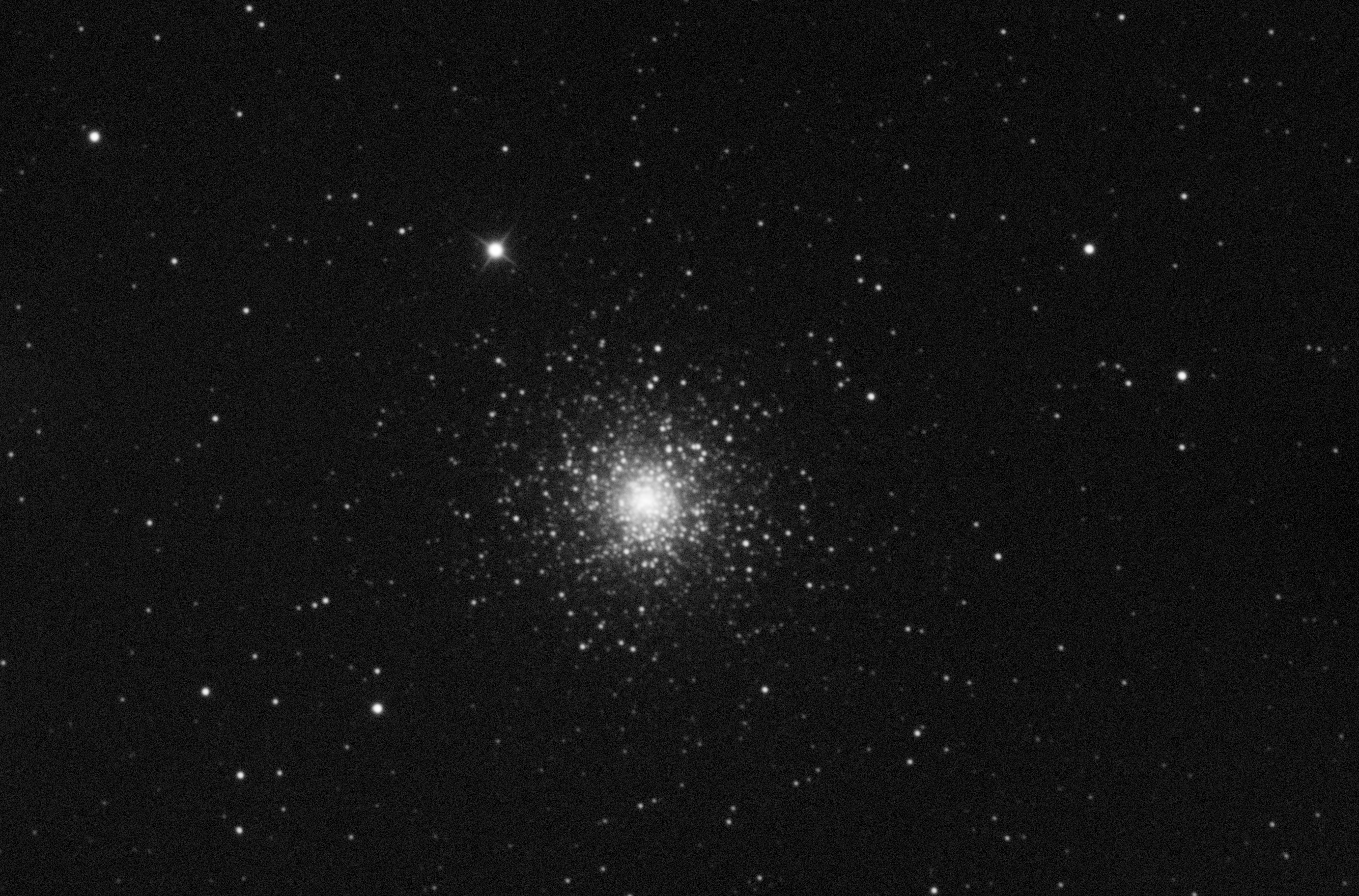
Being observed as M15.
This cluster is uniformly circular with a size of about 7 arc/min in diameter if you are looking at just the outer edge of the brighter condensation after which there is a rapid falloff out to the 12 arc/min listed in Simbad. The cluster is made up of 13-14 mag and fainter stars and these are evenly distributed around the condensed core which extends to about 3 arc/mins. To the NE is the brightest star on the FOV SAO 107179 at 7.7 mag.
Image Integration 210 sec
C11, NGC7635
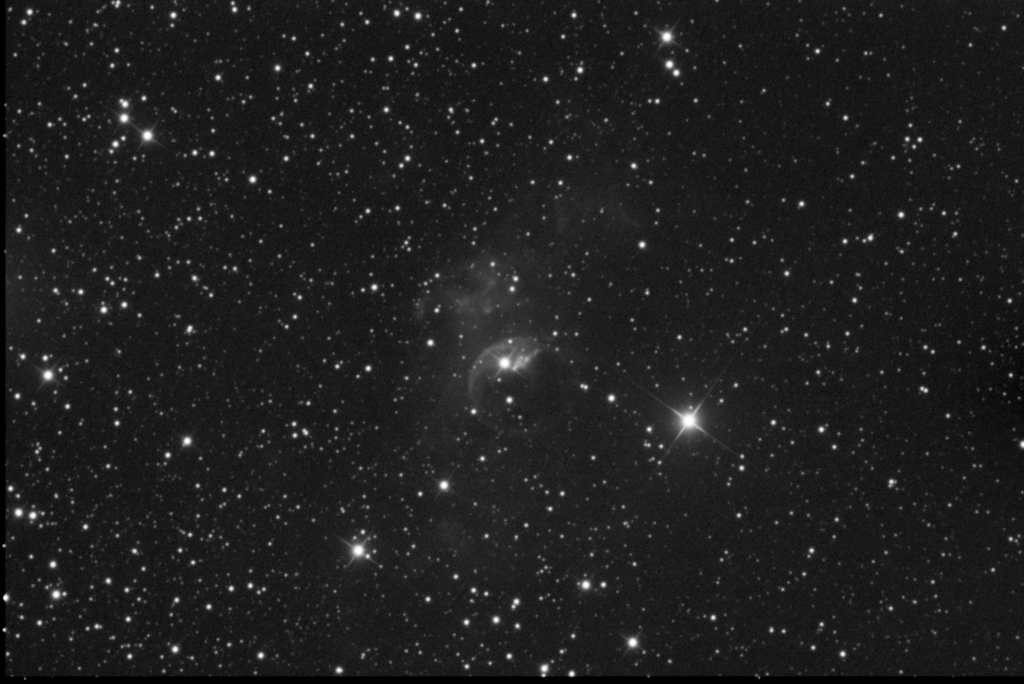
This is one of those object that just looks unreal. An almost spherical bubble with the 8.4mag bright star SAO20575 not quite at its centre
There is crescent shaped line of dust at the NE edge and just to the East of the bright star is an illuminated bank of gas and dust.
To the North and South is a bank of nebulosity extending 7 arcmin each way from that bright star. The Northern bank being more brightly illuminated.
Image Integration 315 sec
L9, Clavius
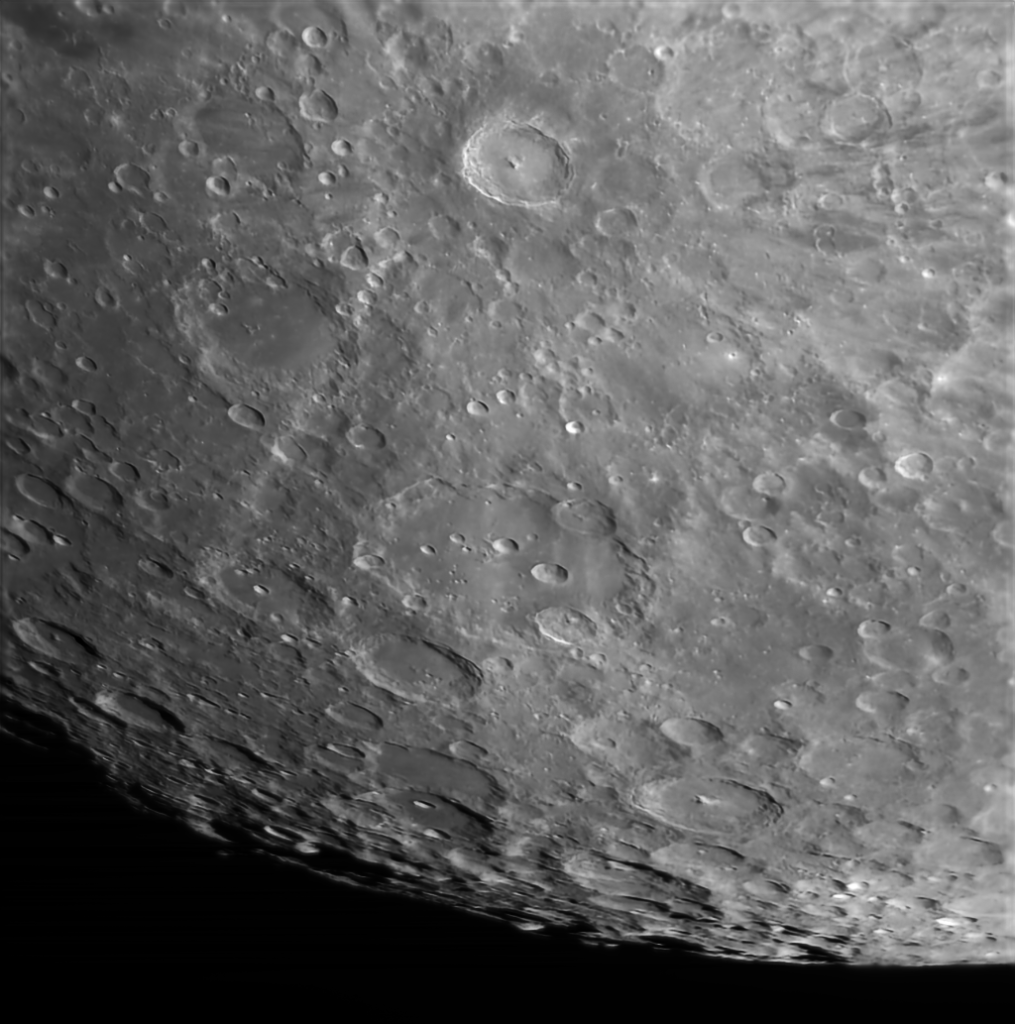
This is a two for the price of one image as I’m getting Tycho on the chip as well.
My optical resolution just shows the existence of craters down to about 3km. There are a number of smaller craters 41km to the East of Clavius D, but these aren’t being resolved. I’m going to have to get a x2 or x3 Powermate at some point to be able to reveal this smaller features in the future.
Clavius itself displayed what look like two tiers of terraces to the North, East and West. The NE edge being broken into by the crater Porter. Breaking the rim to the SE is the crater Rutherford – the floor of which looks very broken and rough – not smooth like the floor of Clavius.
Clavius C at the centre appears to have a ridge line extending East and North from its rim. This is quite pronounced in my image, but barely perceptible in lighting angle of the LROC imagery.
Another notable crater in this image is Moretus. At its centre looks what I can only describe as the thorn of a rose rising out from the floor.
This image was taken from a .SER file of 1000 frames at 1832×1832 sensor crop.
Moretus, IAU4034
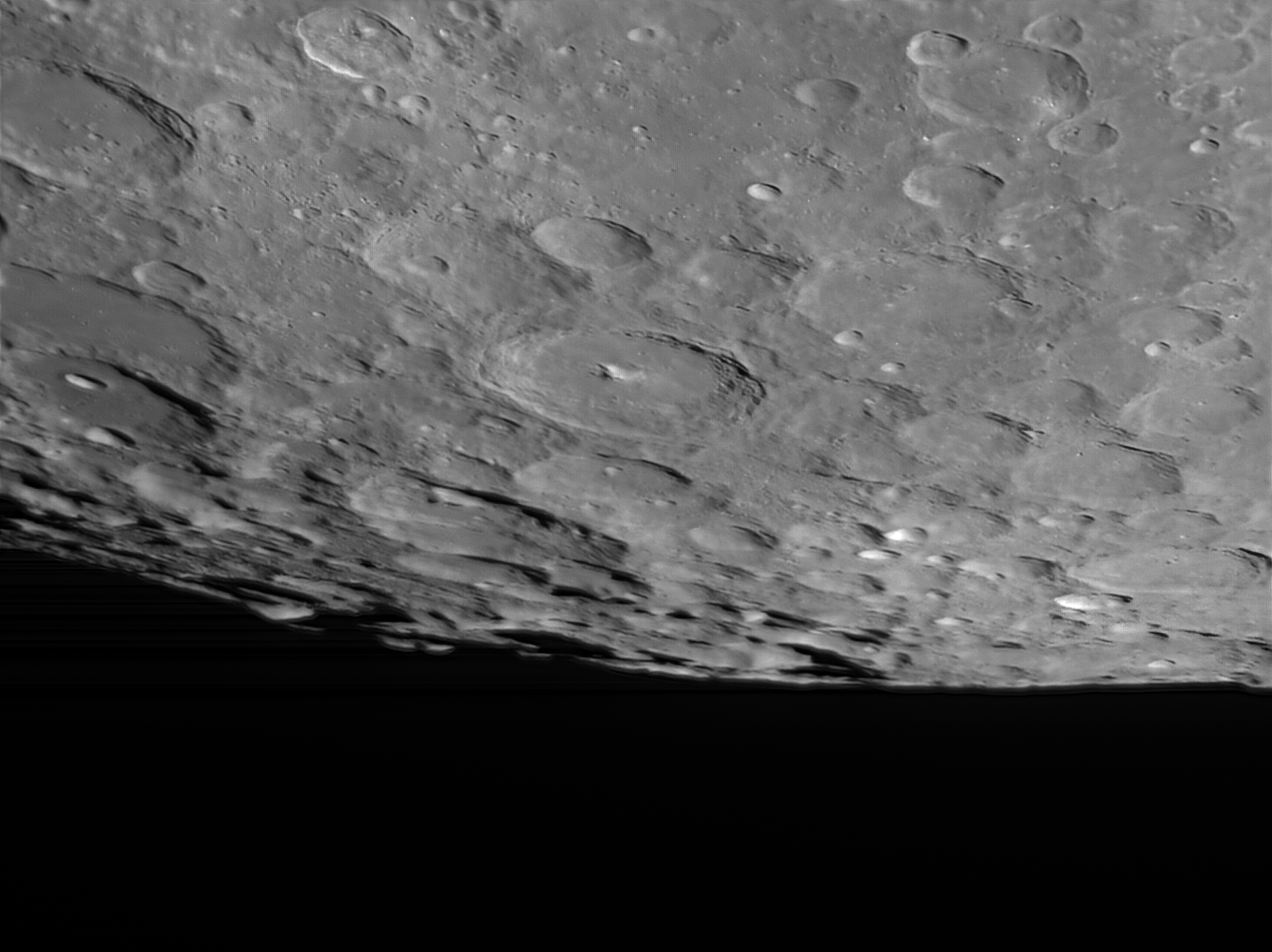
Not sure of the total number of images in this Livestack, but the quality isn’t great.
You can make out the terracing to the North and East. At its centre looks what I can only describe as the thorn of a rose rising out from the floor.

Visually it looks like the peak is higher than the rim, but run an elevation plot and you see it’s only a 2000 metres above the floor and 2000 metres below the rim walls.
NGC7331, Caldwell 30
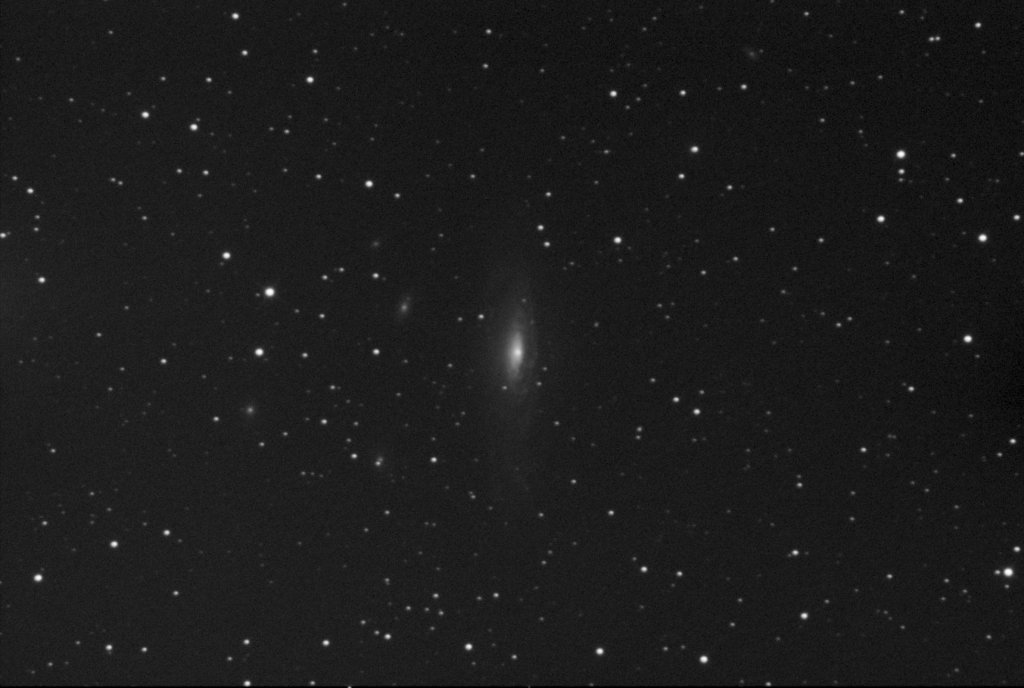
Six for the price of one. This is a very pretty grouping of galaxies. The largest being NGC7331 although I’m observing this as Caldwell 30. The interesting thing is Simbad lists NGC7331 twice. Once as a LINER-type Active Galaxy Nucleus as well as an NGC7331 Group.
Orientated North/South. C30 has a bright tight core and an elongated nucleus 2 arcmin long. I can see at least one arm exiting South and winding to the West and then going to the north. This arm is broken in places and contains a few bright knots which I will assume are star forming regions before I look them up. The other outer arms are too faint to see their point of origin at the nucleus
The galaxy seems asymmetrical with the Southern outer arms extending 5 arcmin where’s arms to the North only reach out to just over 4 arcmin.
If I looks at what’s in the frame, this looks like a galaxy group in at least line of sight. Below is an annotated image showing all the others that are clearly visible.
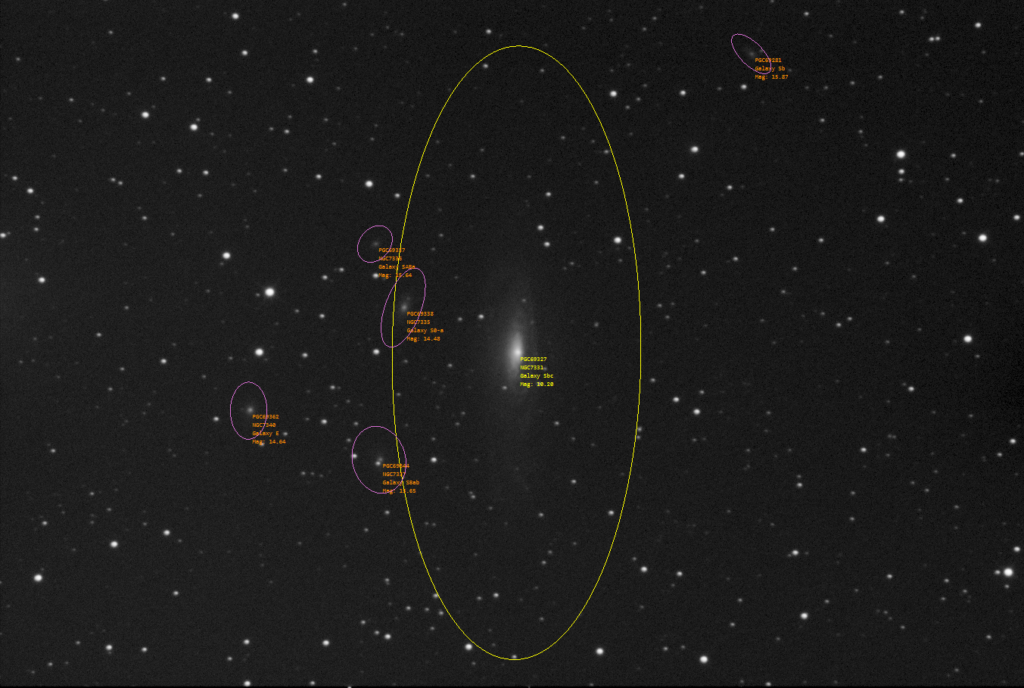
Image Integration 405 sec
Tycho, L6
Both were Sharpcap Livestacks. Things look sharper at the full sensor size rather than the smaller sensor crop used on the first of these images. Again the quality isn’t great
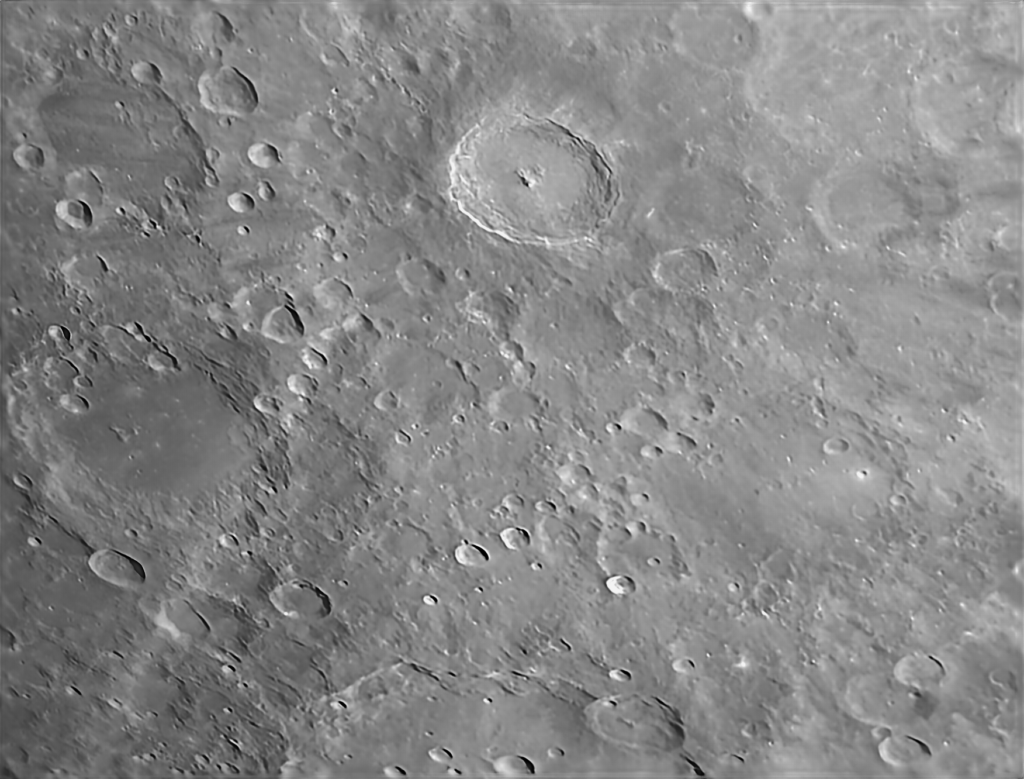
Surrounding Tycho is an faint circular disk of darker material of about 200km in diameter. Is this real or are my eyes – or in this case the camera, deceiving me.
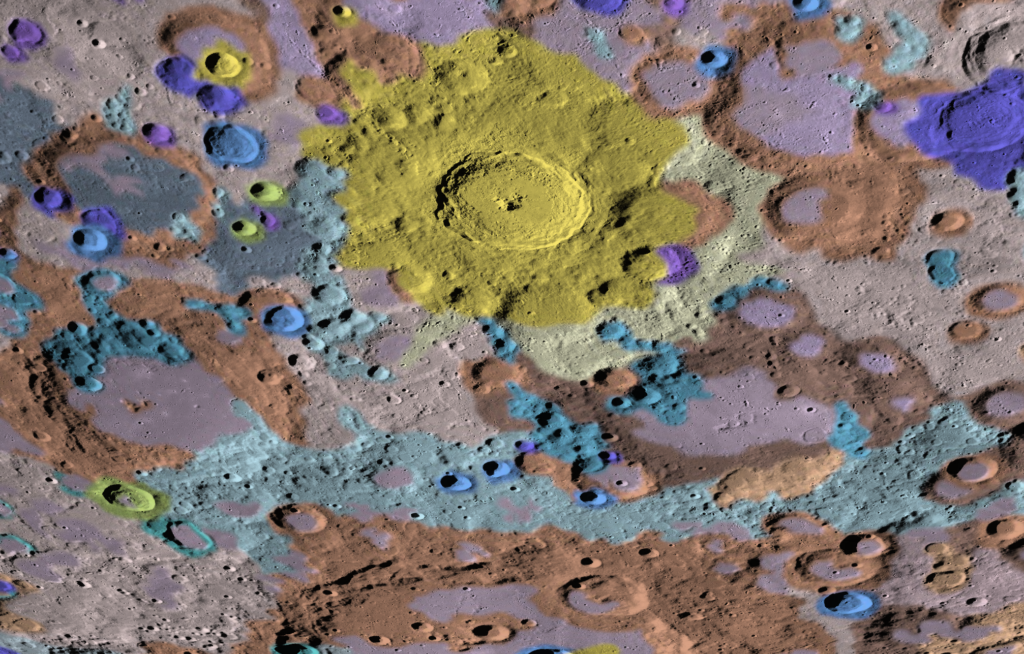
If you look at the 2020 USGS Survey in VMA or LROC overlay, this disk is marked as a Copernican type crater formed about 108 Myr and the yellow shading follows closely what I’m seeing here.
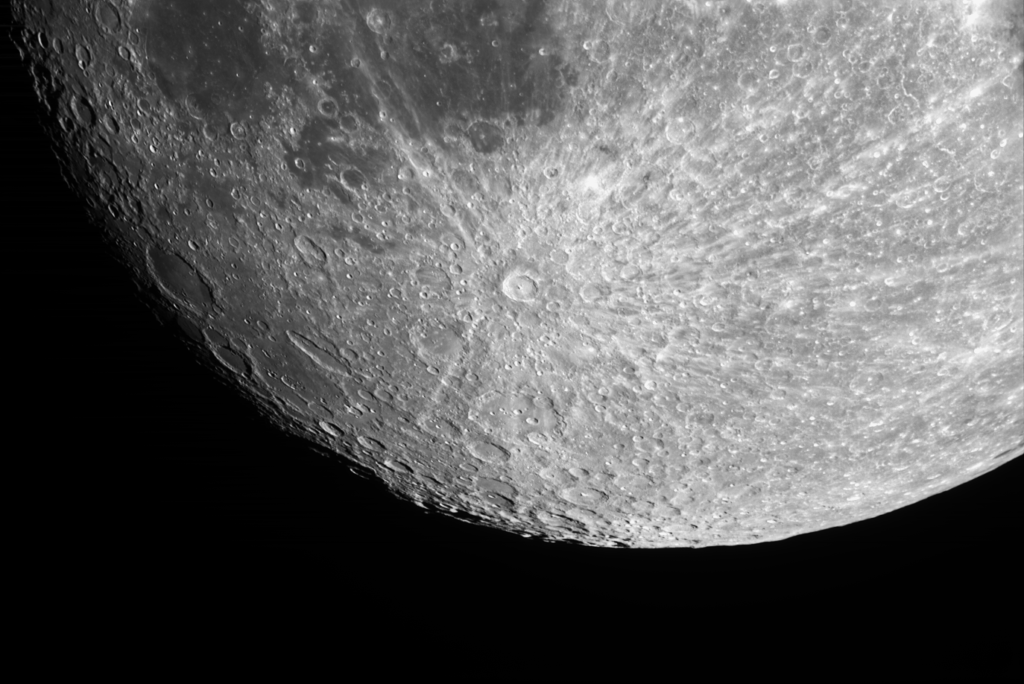
The wider FOV image above shows the ray systems quite well. The longest I can measure is about 1536 Km long passing through Mare Nectaris
Stephan’s Quintet, Hickson HCG92
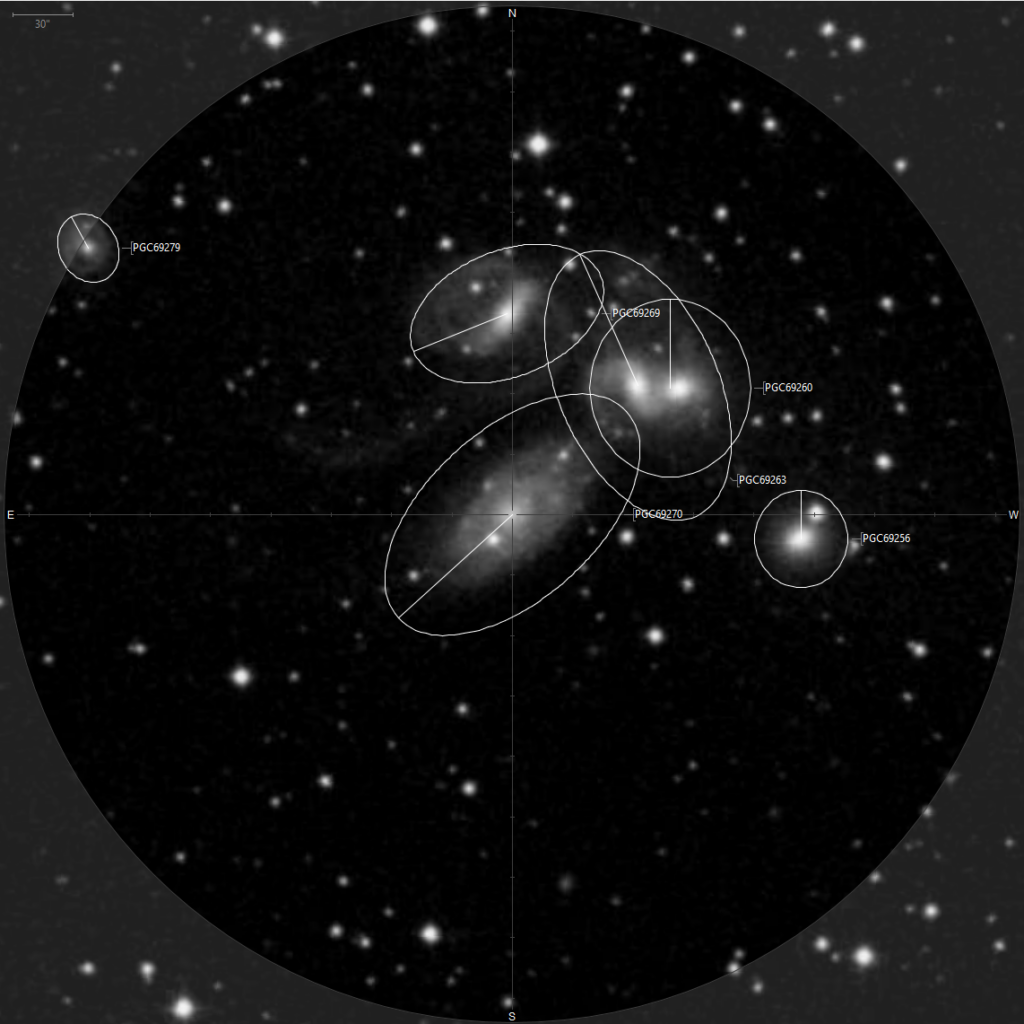
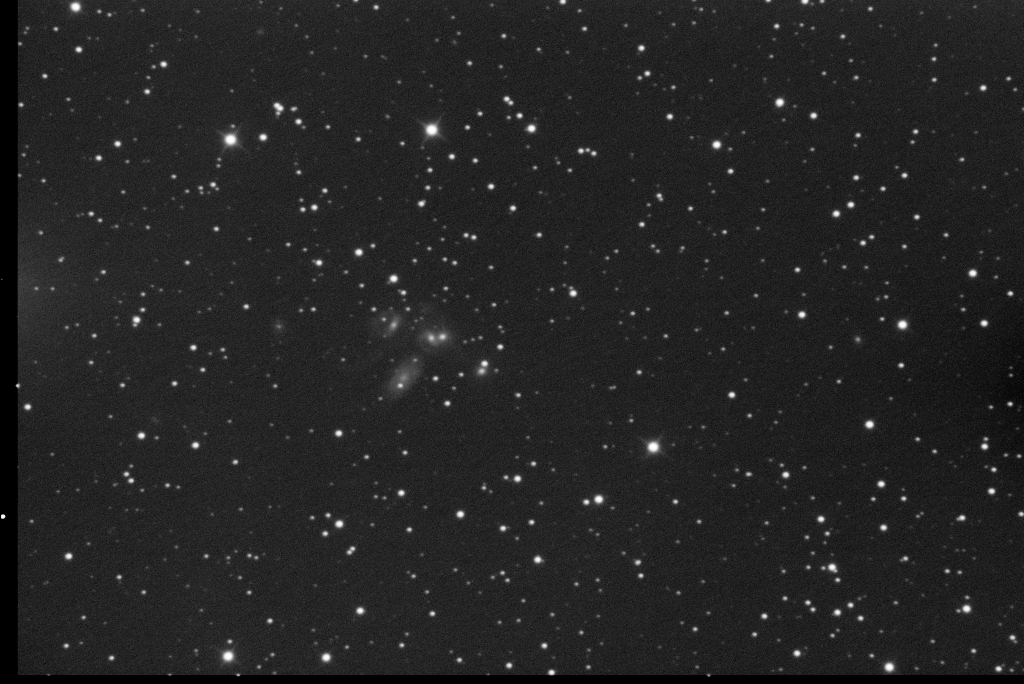
The three larger galaxies are obvious NGC7320 (PGC 69270), NGC7319 (PGC 69269) and the two components of NGC7318 ( PGC 69260 and PGC 69263) . Just over 2 arc/min to the West is the fainter NGC7317 ( PGC 69256) and 4 arc min to the East is the barely visible NGC7320C (PGC 69279)
You can make out the two merging galaxies of NGC7318, with the tails of each curving tightly round the core. What you don’t see at 690secs are the two broader tails that head North from each core and merge.
I can make out the Eastern arm of NGC7319 and its barred core. NGC7317 looks like an elliptical and Simbad confirms it as class E4.
While these little galaxies are small, as a group they were quite fun to observe, so I think I’m going to add the Hickson Compact Group catalogue to my observing programme and HCG92 will be my first observation of it.
Image Integration 690 sec
Stephenson 1, 12 Lyr
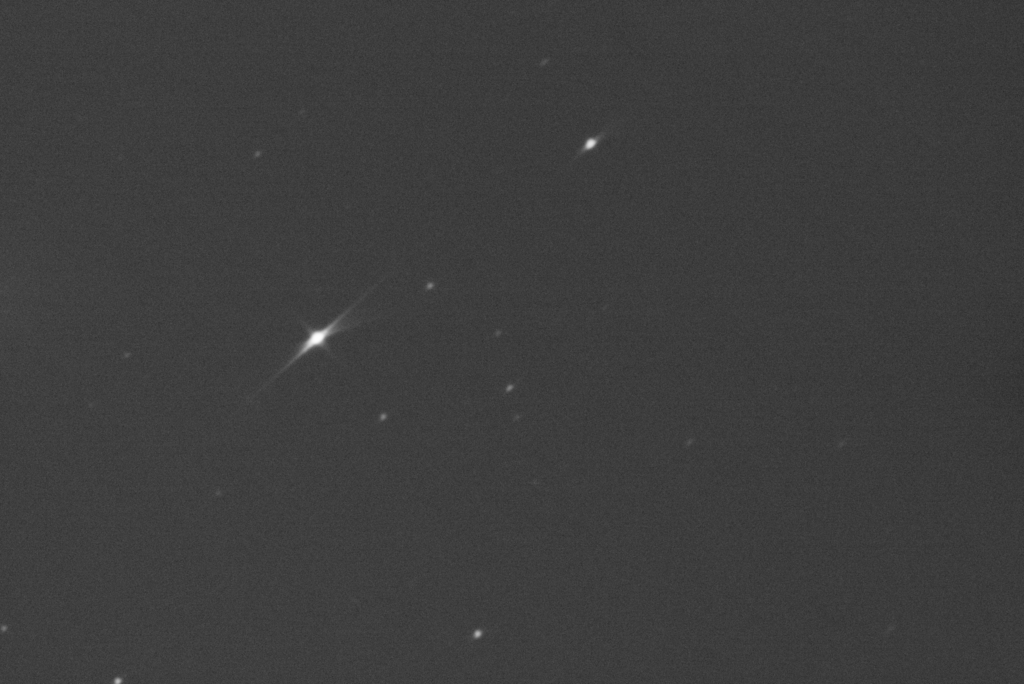
OK. Skytools got me on this on. Just scanning through the atlas and I came across Stephenson 1. Never heard of Stephenson or his open cluster. This object was just above the side of the observatory and sinking fast. With the wind picking up, this seems to have affected the stars, but in any event, what a disappointment. Barely any components and reminds me a little of my first sighting of M40 with its two stars!!
What we have here is the bright star , 12 Lyr 4.3 mag, Delta1 lyr at 5.6 mag and 13 or so stars going down to 8- 9mag – and that’s it.
Image Integration 90 sec